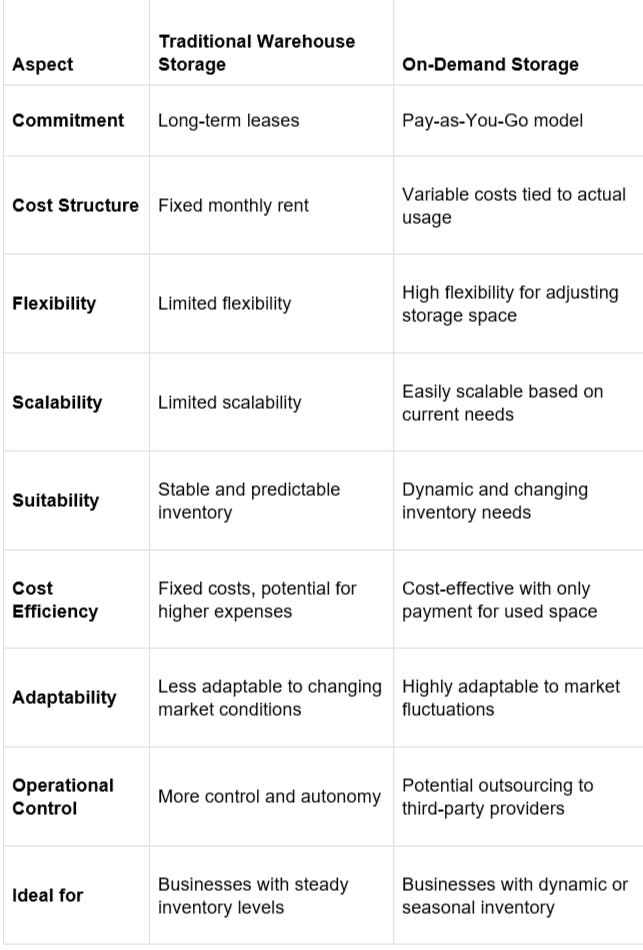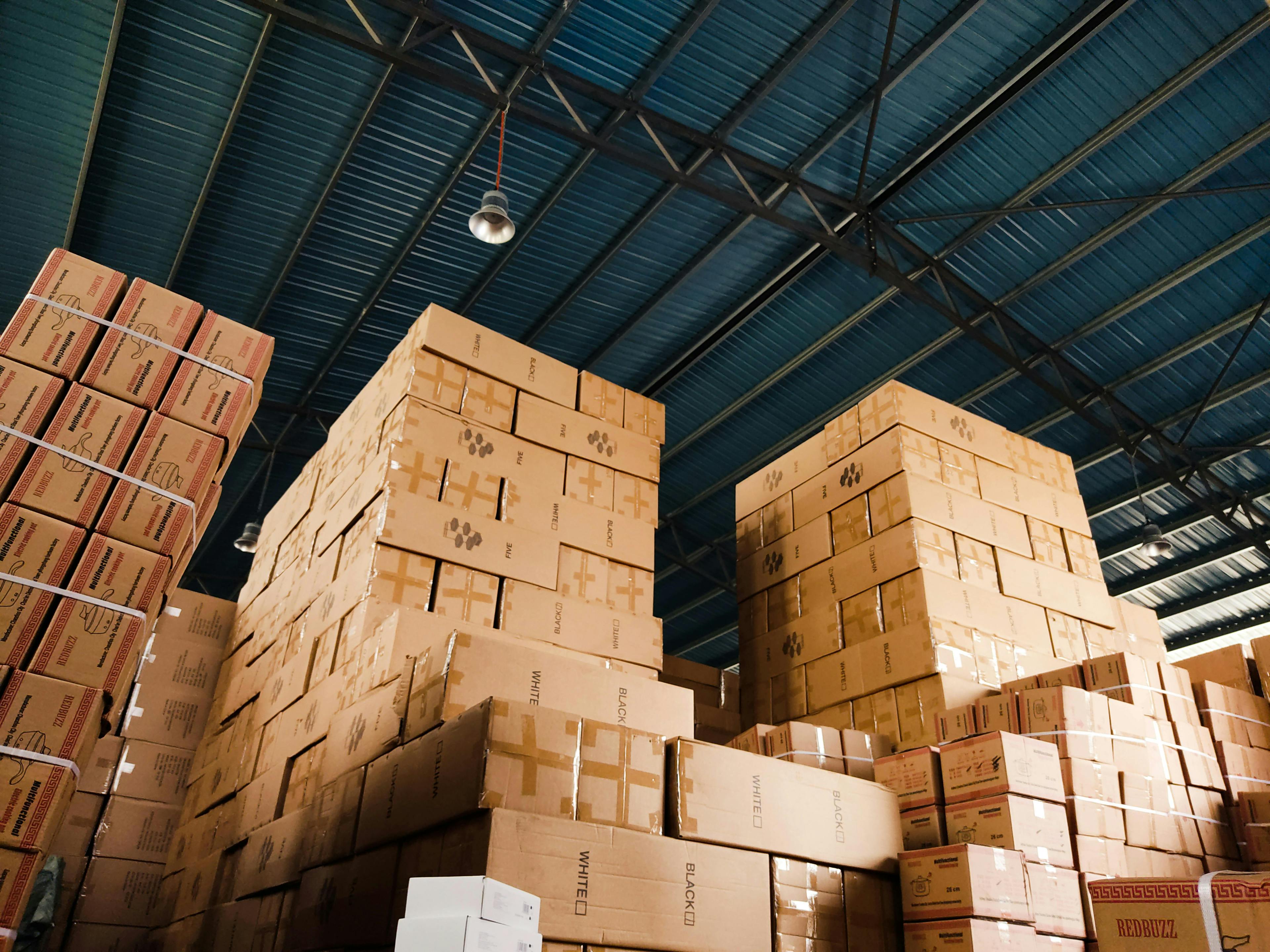Flexible Fulfillment: Your Complete Guide to On-Demand Warehousing
The landscape of e-commerce fulfillment is evolving rapidly, and businesses need solutions that can keep pace with changing demands. On-demand warehousing emerges as a game-changing approach, offering the flexibility to scale operations without the burden of long-term commitments. This shift comes at a crucial time - according to the UK Office for National Statistics, e-commerce sales accounted for 27.3 in January 2024 and increased to 29.3% in December 2024, highlighting the growing need for flexible warehousing solutions.
With the traditional solutions for last-mile delivery, customers were okay with waiting 5 to 10 days to get their items. Today, the average last-mile delivery day has significantly dropped to 1 to 2 days.
Although last-mile delivery time can vary based on the type of delivery, the location, and the service used, the growing popularity of on-demand warehousing is pushing the limits and closing the gaps for customer satisfaction. Let's explore how this innovative solution is reshaping the future of fulfillment.
Unpacking On-Demand Warehousing: The Future of Flexible Fulfillment
On-demand warehousing differs from traditional warehousing in that it lets you scale up, down, or sideways without commitments to a long-term lease.
It is a fulfillment model that allows brands/retailers to negotiate with multiple warehouses across geographical locations, building a global fulfillment network that is cost-effective and demand-responsive while maximizing last-mile delivery that meets customer expectations.
Businesses can scale quickly and be flexible with fulfillment services without breaking the bank. On-demand warehousing is more efficient with a fulfillment partner with a global warehouse storage network. This streamlines SLAs and reduces costs yet keeps reaching emerging target markets uncompromised.
Master Your Storage: How On-Demand Warehousing Works
On-demand warehousing operates on the principle of flexibility and scalability, allowing your business to secure warehouse space and services as needed without committing to long-term leases. It’s like Airbnb for warehousing, which connects businesses needing additional storage space with available warehouse providers.
Partner Up: Maximizing On-Demand Warehousing with 3PL
Let's take an example to understand the concept of on-demand warehousing better.
Imagine that you are running a trendy eCommerce store for clothing that reflects the latest fashion trends, with a fluctuating inventory. Having launched a limited-edition collection, opting for traditional warehousing would lock you into a long-term lease for a space that might be too big most of the year, leaving you paying for unused space.
On-demand warehousing removes the burden of paying for excess storage space. Working with a fulfillment partner like OPLOG, which has fulfillment services across America, Europe, and the Middle East, you can simply book a warehouse storage space for the duration of the collection based on demand forecast.
The cost is calculated per square foot, so you only pay for what you use. Think of it as paying for a hotel room, but for only the section your clothes occupy. OPLOG receives your limited-edition collection, stores it, and picks and packs orders as they fly in. You do not need to rent a van and wrestle with logistics or last-mile delivery concerns.
With technology, you can track inventory levels and order fulfillment in real time through an online dashboard on the Warehouse Management System. So, on-demand warehousing provides agility to win in the ever-changing retail and demand landscape.
6 Reasons Why Your Business Needs On-Demand Warehousing
Beyond the rapid changes in consumer buying habits and expectations, cross-border shopping also influences on-demand warehouse storage and fulfillment. Getting to and beyond the finish line of consumers’ expectations requires having a flexible fulfillment process that isn’t constrained by location or scale.
Here are vital reasons businesses need on-demand warehousing:
Scale Without Limits: Flexibility at Your Fingertips
One of the primary reasons to adopt on-demand warehousing is the freedom to scale up and down or sideways, which touches on business flexibility. This flexibility is becoming increasingly crucial for warehouse space management during peak seasons. For example, a startup selling Barbie movie-inspired popcorn could see a surge in sales after partnering with a major streaming platform to offer limited-edition popcorn tied to the movie release. In that case, this start-up would need a lot more storage space than normal.
Unlike traditional warehousing, which doesn't consider seasonality and often locks businesses into a year-long lease to accommodate the expected surge in demand, on-demand warehousing offers a more flexible and cost-effective pay-as-you-use option. This allows the business to secure temporary storage near major distribution centers before the movie's release.
Then, the business can easily adjust its space to accommodate the initial surge by paying only for the required square footage. As the hype surrounding the movie fades, the business can then transition to a smaller, more cost-effective space or even release the space altogether.
Smart Spending: Lower Your Operating Costs
Paying for warehouse storage space that won’t be needed over specific periods is daunting. Rather than paying for the whole room, on-demand allows you to save money by paying only for the space you use and avoiding upfront investments in real estate, infrastructure, and equipment that are seasonal necessities.
That way, your business converts more fixed costs to variable costs, minimizing risk exposure to uncertainties in demand. Optimizing costs frees up money to invest in areas that can be invested in other areas that drive profit, like inventory, marketing, or hiring.
Go Global: Cross-Border Fulfillment Made Simple
On-demand warehousing removes the burden of businesses investing heavily in cross-border fulfillment, which could sometimes be an exploration attempt into markets with potential consumers. Partnering with an on-demand service provider like OPLOG expands your reach and allows you to test out markets with potential sales and revenue growth at a low cost. You worry less about regional regulations and clearance procedures while taking advantage of micro-fulfillment centers in urban areas closer to consumers.
Speed Matters: Revolutionizing Last-Mile Delivery
Securing retail business success now hinges on same-day, last-mile delivery, driven by customer demand for swift fulfillment and distribution. This shift in consumer expectations is stark ─according to FarEye's latest survey on last mile delivery, 90% of consumers now see 2- to 3-day shipping as the delivery baseline, while 38% expect deliveries on the same day.
On-demand lets you get closer to potential markets at a lower cost, slashing wait times and shipping distances while meeting consumers' delivery expectations.
Work Smarter: Streamline Your Operations
Working with advanced warehouse management systems, which streamline inventory management, order fulfillment, and transportation of goods in real-time, makes monitoring and tracking operations easier.
OPLOG’s advanced Warehouse Management System allows the connection and visualization of warehouses on one platform, giving access to sales data, storage, shipments, and inventory levels. Consider the order status screen of OPLOG ONE below, demonstrating live order tracking from creation to delivery and exemplifying how a WMS can increase the visibility of your operations.

Access to in-depth data can help provide insights for informed decisions on expanding reach and entering new markets.
Play It Safe: Risk Management Made Easy
On-demand warehousing enables you to efficiently manage the risks associated with long-term investments in emerging markets. Instead of being locked into a long-term commitment, you can have flexibility and adjust warehousing needs based on demand, seasonality, and other factors that may impact your business.
Another benefit of on-demand warehousing is that it eliminates the need to depend on the actions of competitors who may have the financial resources to commit to a long-term lease or a third-party logistics provider (3PL). Working with an experienced on-demand fulfillment partner, you can access a network of warehouses and distribution centers across different locations, helping you streamline locations that require more resources. This can help improve your overall supply chain efficiency, giving your business a competitive edge.
Traditional vs On-Demand: Choose Your Storage Wisely
Warehouse storage traditionally involves renting or owning permanent space, while on-demand storage allows for flexible, short-term contracts. Here are some of the main differences between warehouse storage and on-demand storage:

Wrapping up: Transform Your Fulfillment Today
On-demand warehousing is a game-changer in the eCommerce industry. It allows businesses to scale up or down without being locked into long-term leases, which can be costly and inefficient. With the rise in customer demand for fast and reliable last-mile delivery, on-demand warehousing can help you meet these expectations while keeping costs low. It is an excellent solution for businesses that have fluctuating inventory and need to adapt to changing market trends.
By partnering with a fulfillment provider like OPLOG, you can benefit from a global network of warehouses that can help reach emerging markets while reducing logistics costs. On-demand warehousing is the future of warehousing, and businesses that embrace this concept will be well-positioned to succeed in the ever-changing retail landscape.
Your On-Demand Warehousing Questions Answered






